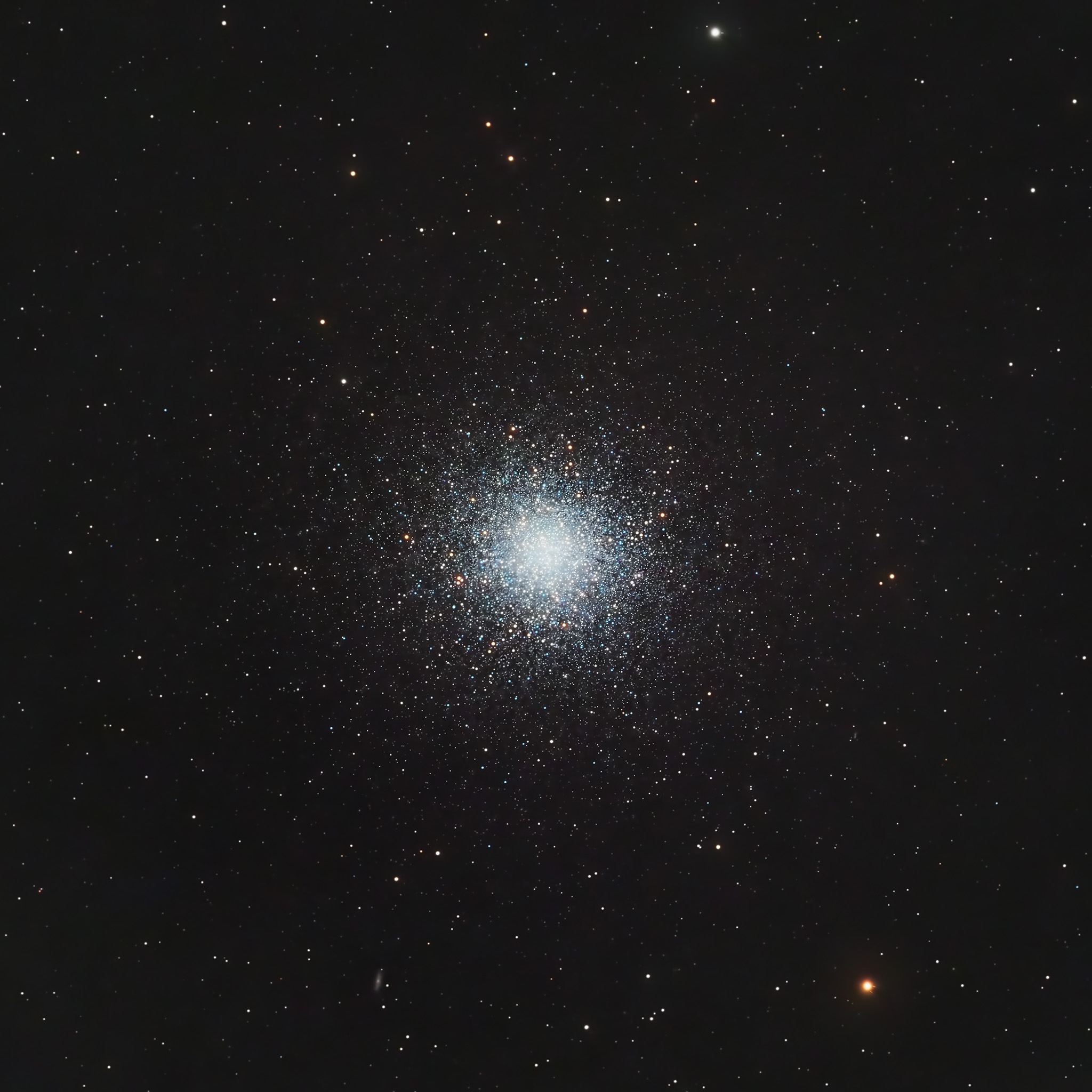Update: I shot this again. Click here to see the latest photo.
The Great Hercules Globular Cluster (M13) is the first astrophotography target that I wanted to shoot when I started this hobby a little over a year ago. After looking at many photos of it, I concluded it was the most amazing object in the sky. After taking a photo with my first rig (A Redcat 51 and mirrorless camera), I realized it wouldn’t be possible to get a decent picture (more on that below). But, times change–I now own an 805mm telescope and ASI533MM. This equipment combo is close to providing an almost perfect framing of M13 and the photo above is a testament to that.
First Attempts with the Great Hercules Cluster
When I first started, I had a Redcat 51 and an APS-C mirrorless camera. At that point, I was inexperienced and did not know what the M13 would look like if I took it with this setup. I soon found out after hours of searching the sky manually moving around my Skyguider Pro:

That’s 1 sub from my mirrorless camera, but it shocked me to see how small it actually was. Here I was looking at these grand pictures of the Hercules Globular Cluster and realized that my setup would only allow me to get a tiny little blurry smudge. I started cropping the photo to see if I could create something useable. This wasn’t happening. It was not only small, but extremely blurry. It was beyond my equipment’s ability to make something even halfway decent. So, I gave up. I learned more about targets that were suitable for my set up as I discovered Telescopious and took my first real stacked picture of the North American Nebula following this.
Shooting the Hercules Globular Cluster in 2023
Here we are in 2023, almost 1 year later. I have a larger telescope (805 mm) and went to capture the Hercules Cluster once again. For all the pain that I went through in 2022 to get a photo of the Hercules Cluster, I was almost shocked at how easy it was this time around. I shot with a mono camera (ASI533MM) and captured LRGB channels. I only got 3h and 37m of data and that was surely enough to bring out the beauty of it. Light pollution was not a factor being it’s a star cluster full of bright stars. If it had faint dust or reflection nebula like M45 or if this was a galaxy, the light pollution would have surely made it almost invisible at just 3h and 37m.
I was happy with the results and I’ll probably do this again. The only thing that I was upset about was just how quick it was to capture and process this globular cluster. I shouldn’t be upset about that, but it felt like it was over before it even started.
M13 Pixinsight Processing Steps
Here are the steps I took in Pixinsight to process the Hercules Cluster, which were fairly straightforward.
Linear
- Dynamic Crop on L,R,G, and B masters
- Dynamic Background Extraction on L, R, G, and B masters
- Channel Combination for R, G, and B channels forming an RGB image
- Image Solver on the RGB image so I can do Spectrophotometric Color Calibration
- Spectrophotometric Color Calibration
- Blur Xterminator on the RGB image and Luminance images
- Noise Xterminator on the RGB image and luminance images
- Masked Stretch on both the RGB and Luminance images
Non-Linear
- Curves Transformation (contrast)
- Curves Transformation (saturation increase)
- Curves Transformation (luminance increase)
- Dynamic Crop to 2100 x 2100
- Local Histogram Equalization (light sharpen)
Integration Time for M13
| Filter | Integration Time |
| Antlia V-Pro Red | 39m |
| Antlia V-Pro Green | 41m |
| Antlia V-Pro Blue | 33m |
| Antlia V-Pro Luminance | 1h 44m |
| TOTAL | 3h 37m |
